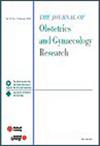What's the difference between human-written manuscripts versus ChatGPT-generated manuscripts involving “human touch”?
Abstract
Aim
To determine whether ChatGPT generates a manuscript with a “human touch” with appropriate inputs, and if yes, what's the difference between human writing versus ChatGPT writing. This is because the presence or absence of human touch may characterize human writing.
Methods
A descriptive study. The first author wrote a Disagreement Letter (Letter 1). Then, disagreement points and “human touch” were provided as input into ChatGPT-4 and tasked with generating a Letter (Letter 2). The authors, seven experienced researchers, and ChatGPT evaluated the readability of Letters 1 and 2.
Results
The authors, researchers, and ChatGPT, all reached the same conclusions: the human-written Letter 1 and the ChatGPT-generated Letter 2 had similar readability and similarly involved human touch. Some researchers and ChatGPT recognized slight differences in formal or informal and personal or nonpersonal tones between them, which they considered may not affect paper acceptance.
Conclusions
Human touch is not humans' exclusive possession. The distinction between the human writing versus ChatGPT writing is considered to be present not in the output (manuscript) but in the process of writing, that is, the presence or absence of a joy of writing. Artificial intelligence should aid in enhancing, or at the very least, not impede the human joy. This discussion deserves ongoing exploration.

 求助内容:
求助内容: 应助结果提醒方式:
应助结果提醒方式:


